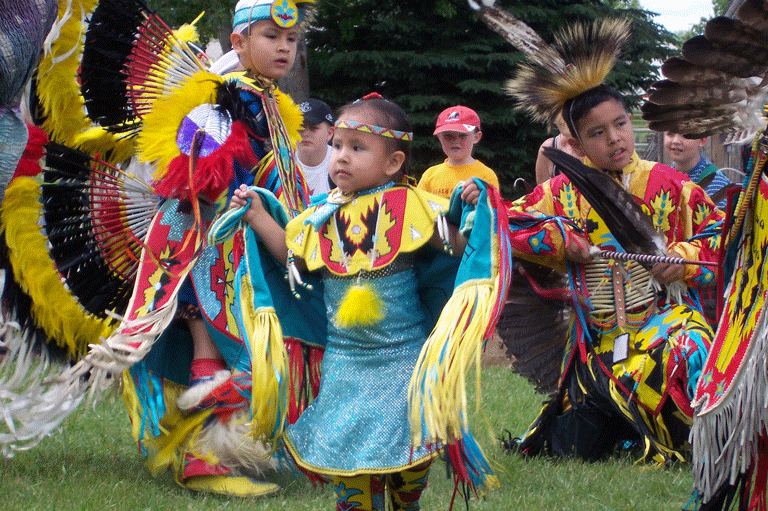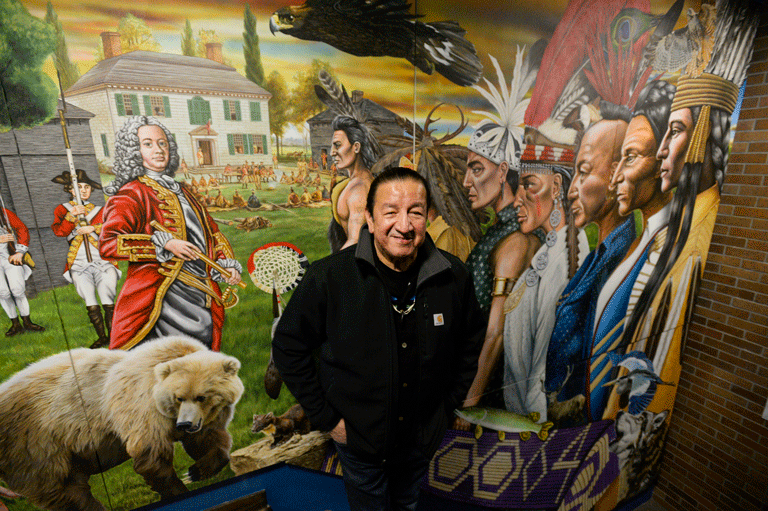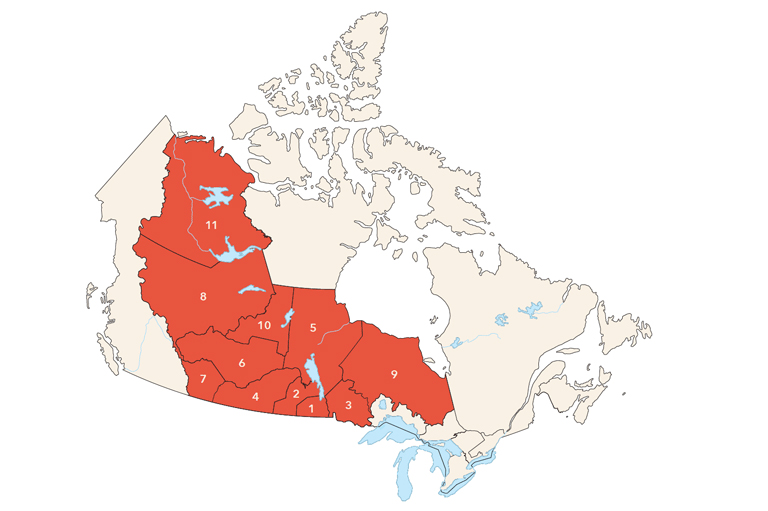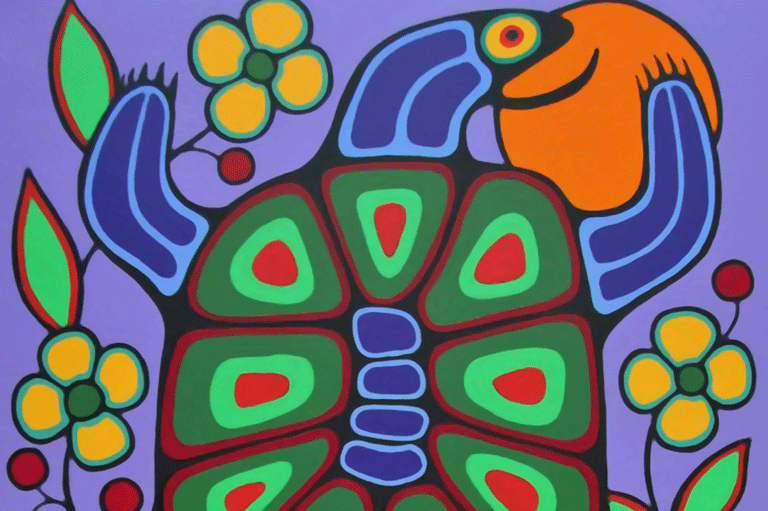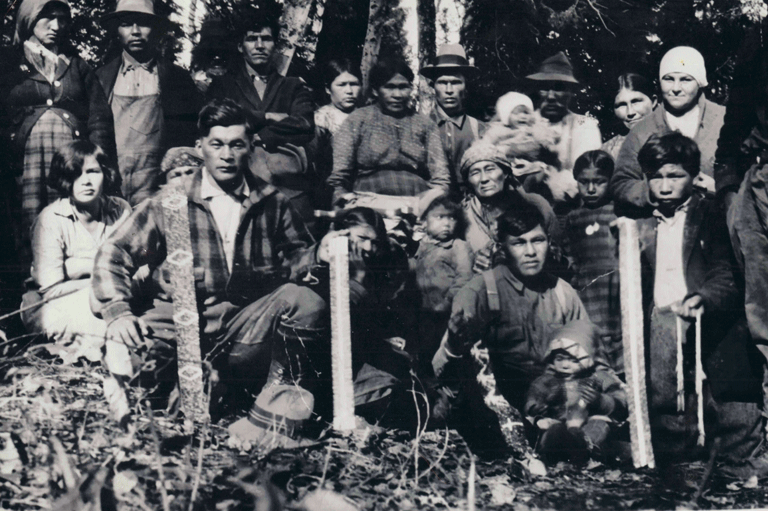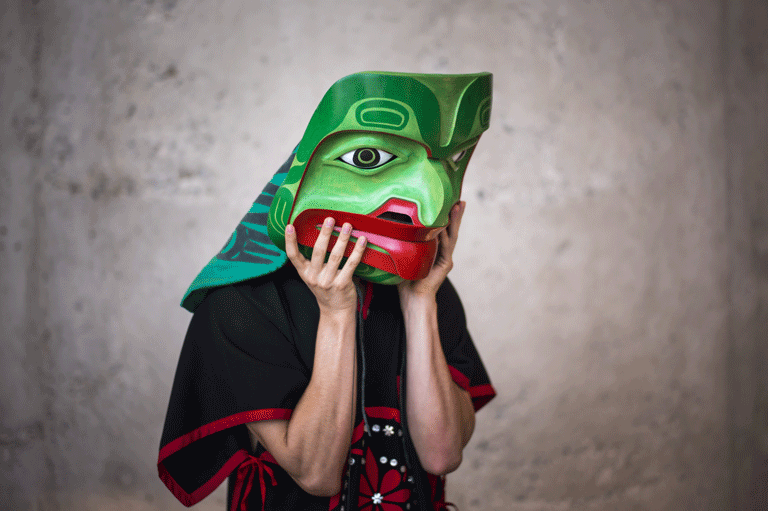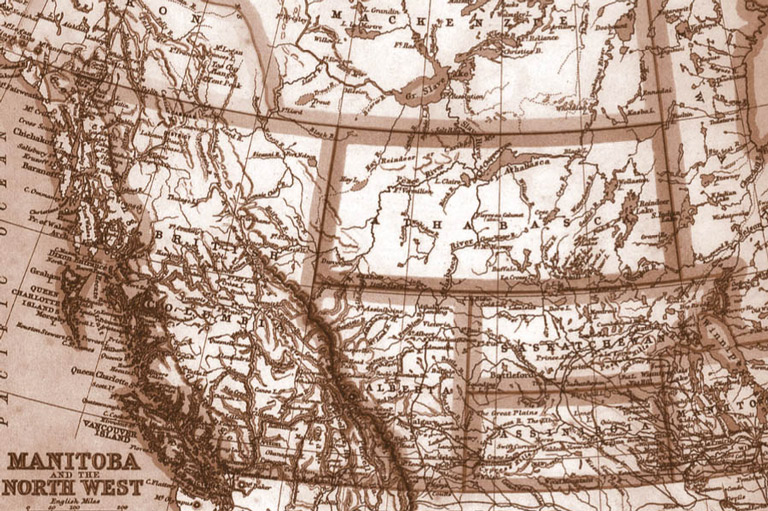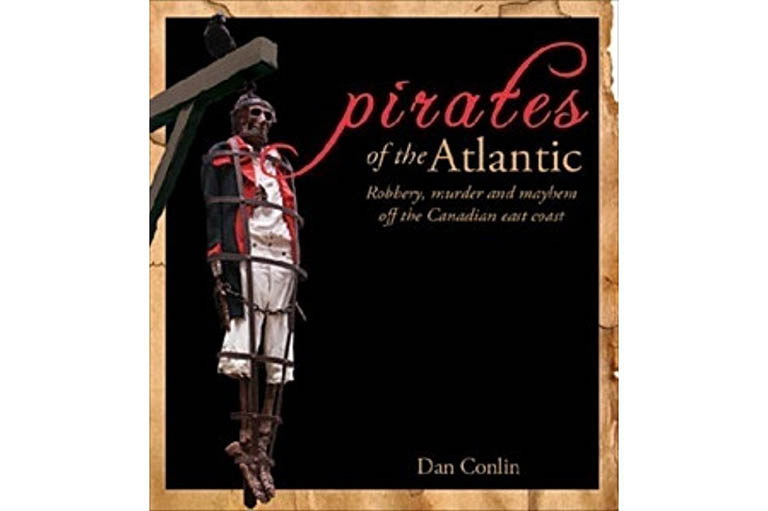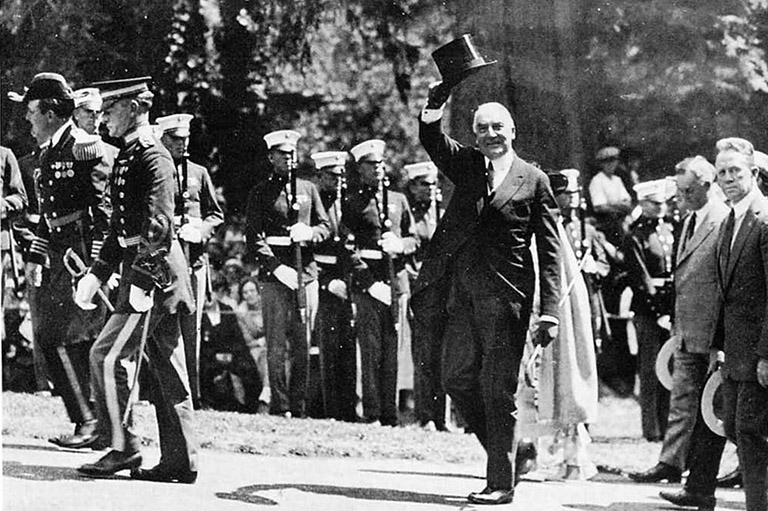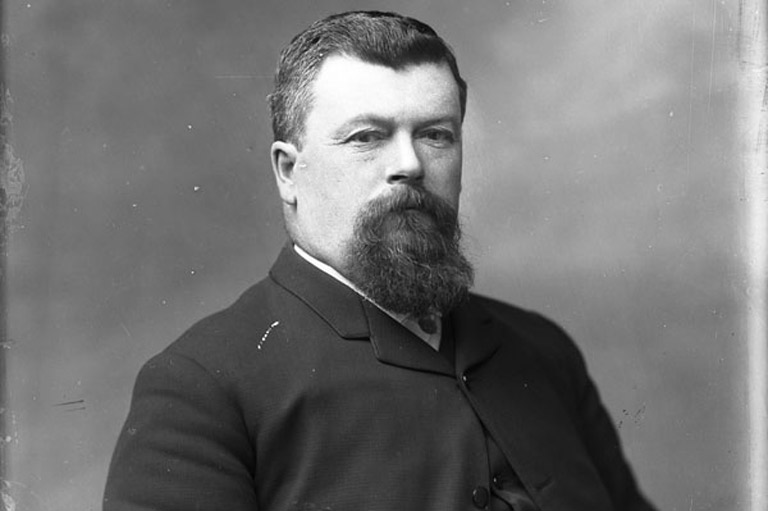Interpreting the Treaties
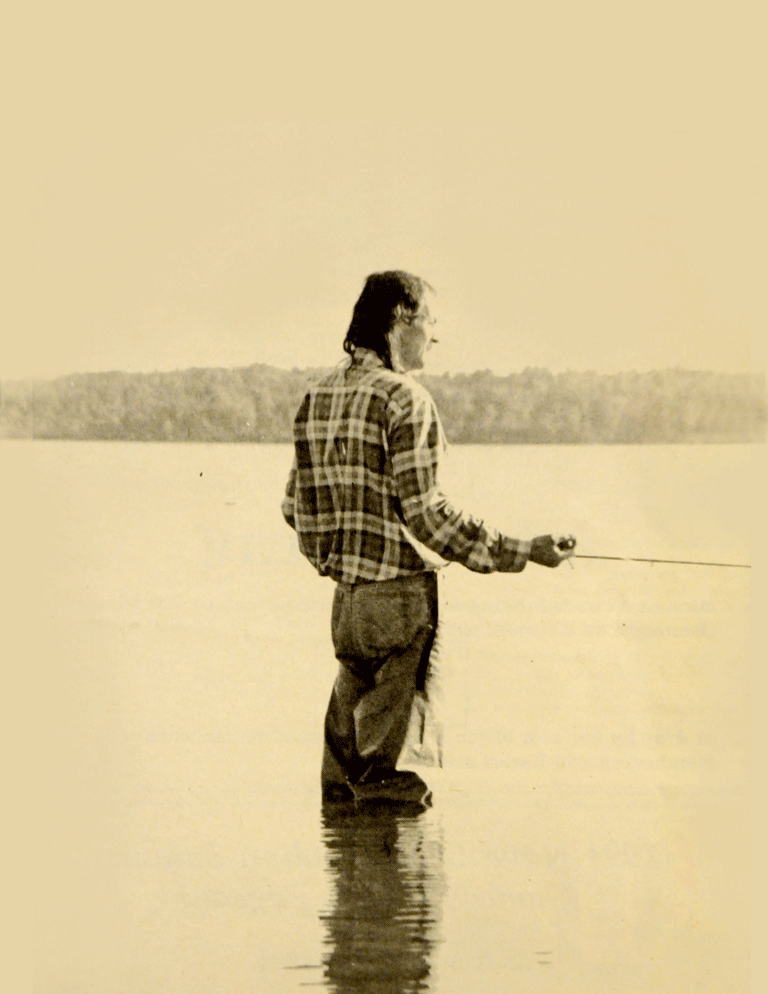
In 1993, Donald Marshall Jr., a Mi’kmaw from Nova Scotia’s Cape Breton Island, sold 201 kilograms of eel to a New Brunswick company. The federal government charged Marshall with selling fish without a licence.
He claimed that a 1760 Treaty his ancestors had signed with the British gave him a right to sell fish. Forcing him to buy a commercial licence, he said, was an unreasonable burden on his Treaty (constitutional) rights.
After a six-year court battle, the Supreme Court of Canada agreed, though it also said that Treaty right could be abridged for conservation and other reasons.
The Marshall case illustrated how First Nations people, historians, lawyers, and judges interpret Treaties differently. One challenge is that the Treaties were written in English and contained phrases difficult to translate into First Nations languages.
In a 1725 Treaty, for instance, the First Nations agreed to not interfere “with settlements already made or lawfully to be made.” How was that phrase understood? Did British officials interpret it differently from Indigenous speakers?
Historians tackling this problem often outline the historical context in which a phrase was written to conceptualize each party’s understanding.
We should recognize, however, that “lawfully” is an ambiguous term. What law? British law? Indigenous law? Or a mixture of the two?
While we may not be able to answer these questions definitively, asking them allows us to conceptualize what Indigenous peoples might have thought.
We know more about how eighteenth-century Europeans viewed these issues because they wrote and preserved their records. Thus, we are more likely to know how they understood the phrase “lawfully to be made,” because we can reconstruct the society in which those words were used. We know less about Indigenous peoples before 1763, as they did not keep records about historical events in the same way as Europeans.
We know, however, that First Nations kept oral memories of the Treaties, and that these memories were transmitted to later generations. But historians have not always integrated these oral histories into their interpretations.
We get glimpses of these oral histories in the Atlantic region, where First Nations speakers referred to previous Treaties they had signed. In 1749, for instance, when Nova Scotia Governor Edward Cornwallis asked the Maliseet if they remembered an earlier Treaty they had signed, their speaker replied that they had a copy of it and said, “we are come to renew it.”
A century later, in a petition to Queen Victoria, Mi’kmaw leaders said that “we can neither disbelieve nor forget what we have heard from our fathers when peace was made.” And in a courtroom in Port Hood, Cape Breton Island, in July 1928, Joe Christmas, then seventy-four years old, said he had “heard that according to Treaty we had right to hunt and fish at any time. I cannot read. Heard it from our Grandfathers. Heard that King of England made Treaty with Micmacs [Mi’kmaq]. With the whole tribe.”
Like other First Nations in eastern North America, the Mi’kmaq and Maliseet also recorded their memories in wampum belts. These belts were composed of thousands of shells that were woven together and that depicted symbolic figures. They were used in diplomatic exchanges with European officials and with other Indigenous peoples. These belts thereafter became mnemonic devices used to remember past agreements.
These examples show that Indigenous people retained copies of the Treaties, passed oral histories on to future generations, and recorded memories in wampum belts. However, the further back in time memories stretch the more difficult recovering these perspectives becomes. This renders understanding some Treaties challenging.
Another challenge is that European colonization tore First Nations communities asunder, causing difficulties in conceptualizing what their people understood when the Treaties were made.
Because Indigenous societies experienced dramatic change after 1600, historians have difficulty reconstructing their histories. For example, by the early nineteenth century, the Beothuk of Newfoundland and Labrador had ceased to exist as a distinct people.
They had small, if any, trading relationships with seasonal European fishing parties, and their numbers fell when European settlements interfered with their hunting and fishing grounds. Often malnourished, they were very vulnerable to European-borne diseases, especially tuberculosis. Violent tensions between settlers and Beothuks also took a toll.
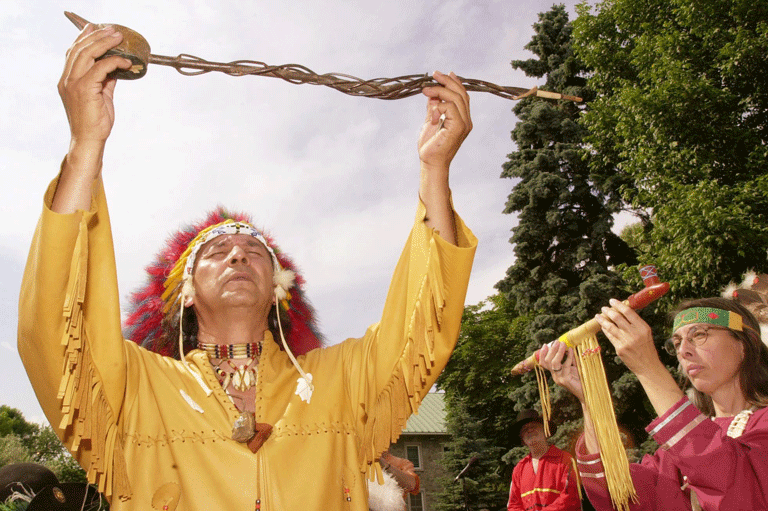
Tsaminik Rankin, an Algonquin spiritual leader from the Pikokan Reserve in Abitibi, Quebec, purifies to the four directions with the peace pipe used in the Great Peace in 1701. The ceremony, held in Montreal in June 2001, marked the three hundredth anniversary of the Great Peace, a Treaty between First Nations and the colonists of New France.
With 7 uniquely curated newsletters to choose from, we have something for everyone.
We know much about Beothuk culture, history, and language from Shanawdithit — a young woman who spent the last year of her life in the care of a philanthropist and scientist who preserved her drawings and stories. When Shanawdithit died in 1829, she was believed to be the last of her people, but other members of her community had probably already integrated into the Mi’kmaw population of southern Newfoundland.
The Innu, Maliseet, and Mi’kmaq also lived in Atlantic Canada at the time of European contact. European-borne diseases, such as smallpox and influenza, also dramatically affected their populations.
Conflicts inevitably ensued when settlers encroached on Indigenous land. In the 1600s, the colony of Massachusetts was at war with the Abenaki, Narrangansett, Pequot, and Wampanoag. Many Indigenous people were killed, sold into slavery, or absorbed into settler communities. Others fled to Canada’s St. Lawrence Valley region and formed communities there. These included the Abenaki, who settled at Wolinak and Odanak in Quebec. These communities continue to exist today.
One First Nations population that was able to resist the British and French was the Haudenosaunee Confederacy, also known as the Six Nations. Because the Haudenosaunee lived near waterways connecting New York and Montreal to the interior, they could interrupt the European trade in furs. That made them a focus of European aggression and diplomacy.
As a result, by the late 1600s the Confederacy had splintered into French and British factions.
Some families moved to Kahnawake near Montreal and to Kanesetake near Oka, Quebec, both of which are still important First Nations communities. Other First Nations peoples lived adjacent to the Great Lakes. Some people, such as the Lenape, Miami, and Shawnee, were refugees as the growing British colonies had forced them westward into the Ohio Valley.
The other major confederacy was the Anishinaabeg, who lived north and west of lakes Erie and Ontario. Composed of Chippewa, Odawa, Ojibwe, and Potawatomi, the Anishinaabeg had by the late 1600s become important allies of New France.
As all of this shows, First Nations peoples experienced profound dislocation after 1600.
Before 1600, First Nations made Treaties among themselves. These agreements were recorded and exchanged in belts of wampum. By accepting the belt, a party agreed to its content. The belt was kept as a testament to the Treaty that had been made.
Beginning in the 1600s, the British and French made Treaties with various First Nations in order to regulate relationships with them and also to secure access to Indigenous lands and trading networks.
In Connecticut, Massachusetts, and Rhode Island, the colonists understood these Treaties as land surrenders. The agreements were written on paper and contained legal language delineating the lands that had been sold. The First Nations people, however, likely understood these agreements differently.

The Hiawatha belt symbolizes the agreement between the five original Haudenosaunee nations and their promise to support each other in unity. The central symbol is a tree representing the Onondaga Nation — where the Peacemaker planted the Tree of Peace and under which the leaders of the Five Nations buried their weapons. Four white squares, from left to right, represent the Seneca, Cayuga, Oneida, and Mohawk peoples. Lines extending from the nations stand for a path that other nations might follow, if they agree to live in peace and to join the Confederacy. The Tuscarora became the sixth member of the League in the 1720s.
By the eighteenth century, wampum had become the means through which European officials communicated with the Haudenosaunee and other nations. For instance, in 1766, an English merchant wrote that before leaving Montreal he had received from Kahnawake and Kanesatake deputies “a belt & speech, desiring me to represent their behavior to the King [George III], which I have done through Lord Shelburne, one of His Majesty’s principal Secretaries of State; in consequence of which, I have received the enclosed letter from Lord Shelburne, signifying His Majesty’s pleasure thereupon, which fully shows his entire approbation of their friendly conduct and assurance of the continuation of His tender regard & protection.”
War between New France and the Haudenosaunee began in the 1640s and ended with the Great Peace of 1701. The Treaty signed in Montreal during the summer formally brought an end to six decades of conflict in French-Haudenosaunee relations. The peace was also signed by various western Indigenous peoples, who were aligned with the French, including the Anishinaabeg, Fox, Sauk, and Winnebago nations.
Under the Treaty, the Haudenosaunee agreed to remain neutral in future conflicts between Great Britain and France; they also gained access to trade with western First Nations.
From 1701 to 1763, conflict between Great Britain and France complicated relationships with Indigenous nations. Though these two countries had been at war before, the eighteenth century marked a new conjuncture. The Seven Years War (1756–63), waged in Europe, South Asia, the Caribbean, and Central and North America, was principally about which nation would control European global trading networks. By the 1750s, this trade had reached into every corner of the globe.
In the North Atlantic, the African slave trade and profits garnered from the Caribbean sugar plantations were important prizes in the conflict. France’s and Great Britain’s North American colonies were part of this trading network.
The French colony of Île-Royale (Cape Breton Island) produced dried cod, which was exported to feed the African-Caribbean slaves. Similarly, New England benefitted from producing rum, which was manufactured from molasses, an extract of the sugar-refining process.
In North America, the centre of British-French conflict during the Seven Years War was the Ohio Valley. Canadian interest in the region, and a growing French population between Illinois and Louisiana, threatened British interests there.
Located south of lakes Erie and Ontario, the valley had become, by the mid-1700s, an area of expansion for the colonies of New York, Pennsylvania, and Virginia. Thomas Jefferson and George Washington, each Founding Fathers of the United States, were among those with a financial investment in the region.
In the ensuing conflict, British officials made promises about their future intentions regarding First Nations lands. This was necessary, as the Anishinaabeg, Lenape, Shawnee, and other western First Nations were allies of New France, and their support for the French could have undermined British war aims. These promises became the foundation of the Royal Proclamation of 1763.
This document was principally concerned with restructuring British colonial governments following France’s surrender of its North American colonies in the Treaty of Paris (1763).
The Proclamation also reserved lands west of the Appalachians (from present-day Ontario westward) as the “Indians hunting grounds” and forbade all non-Indigenous people from settling there, except with the Crown’s consent. The Proclamation said that consent could be given once a First Nation had formally surrendered its lands, and only officials representing the King could accept a land surrender.
The Proclamation also established that lands previously reserved could not be alienated other than by the First Nations’ explicit consent. As deputies from the Six Nations told Sir William Johnson, the superintendent of Indian Affairs for the northern region of British North America, in May 1763, “We have often sold Lands to the white People, but then it was done with consent of the whole in some General Meeting….”
The Treaties established a unique legal relationship between the British and the First Nations. The British chose to negotiate terms with the Mi’kmaq and Maliseet. They did not do so with the Canadian or Acadian populations. We might say, therefore, that the British and First Nations were determining how they would live together.
Again, the idea of “selling” land was likely understood differently by Europeans and First Nations peoples.
Some historians and First Nations communities today argue that the Proclamation also reserved all lands east of the Appalachians as First Nations territory, unless it had been already “sold” or “surrendered.”
The importance of the Proclamation can be seen through the letter Thomas Gage, the commander-in-chief of British forces in North America, wrote to Johnson in 1763: “I think it right to enclose you one of those Copys of the Said Proclamation, for your Information of the Regulations which have been made, & particularly as they are So very favorable to all the Indian Tribes, a proper Explanation of the Articles which concern them, I imagine Must have great Influence over their Minds, and induce them to a Conviction that His Majesty is well disposed to favor & protect Them.”
The Peace and Friendship Treaties the British made with the Mi’kmaq, Maliseet, and Passamaquoddy illustrate the legal and historical issues the European invasion of First Nations lands poses.
Before 1763, France and Great Britain also battled over Acadia, which then included Nova Scotia, Prince Edward Island, and New Brunswick. For the Mi’kmaq, Maliseet, Passamaquoddy and other peoples, this region was their homeland, their hunting and fishing grounds, the source of their medicines, their sacred and burial sites, and the physical and spiritual foundation of their histories, cultures, and languages.
As Mi’kmaw leaders explained to the French governor of Île-Royale in 1720, “but learn from us that were born on this earth upon which you walk, before even the trees that you see beginning to grow and to leave the earth. It is ours and nothing can ever force us to abandon it.”
By the 1720s, the Mi’kmaq and Maliseet had become concerned with British incursions onto their territories, and between 1722 and 1725 war erupted. In 1725, Massachusetts, New Hampshire, and Nova Scotia signed a Treaty of Peace and Friendship with the Mi’kmaq, Maliseet, and Passamaquoddy to stabilize relations in the area.
In the Treaty, the First Nations agreed not to interfere with the British in their “settlements already made or lawfully to be made or in their carrying on their Trade or other affairs within the said Province.”
The British in turn promised that “the said Indians shall not be Molested in their Persons, Hunting Fishing and Shooting & Planting on their planting Grounds nor in any other of their Lawfull occasions.”
However, “lawfully” and “lawfull” were not defined. The signatories also did not define where the First Nations people would be hunting, fishing, shooting, or planting. This makes it difficult to interpret how each side understood the Treaty.
Comments were made by one First Nations speaker from the Penobscot River region after he was told that the British had obtained sovereignty over Acadia “according to its ancient limits” through the 1713 Treaty of Utrecht: “You say, my brother, that the French have given you Plaisance, Port Royal and the surrounding lands, keeping only for themselves the river on which Quebec is situated. He would give you what he wants, but for me, I have my land that I gave to no-one and that I will not give. I want always to remain the master of it. I know the limits and when someone wishes to live there, he will pay. That the English take the wood, fish or hunt game, there is enough there for everyone, I will not stop them.”
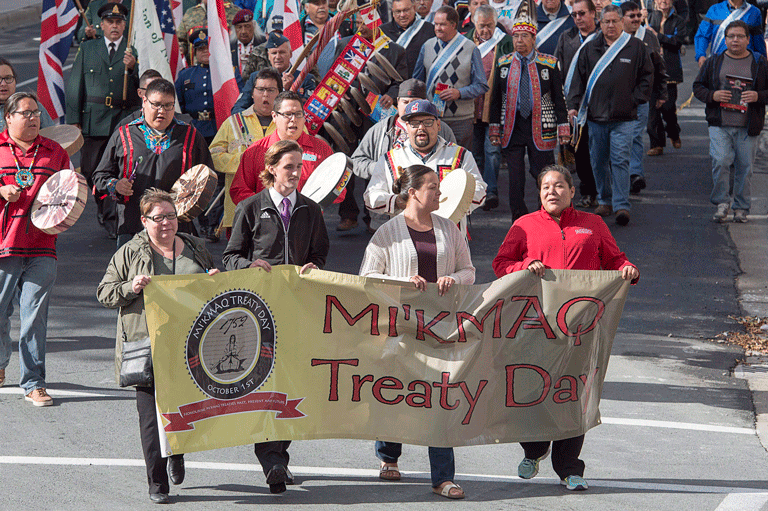
The 1725 Treaty did not establish a stable peace. French administrators in ÎIe-Royale offered presents to those First Nations peoples who attacked British settlements, while the British decision to establish a new settlement at Halifax in June 1749 created additional tensions. Though the Mi’kmaq reaffirmed the peace in 1752, conflict simmered, exacerbated by the growing British-French global war. With the British conquest of Quebec and Montreal in 1759–60, the Mi’kmaq and Maliseet made peace with the British.
Though other Treaties were made in 1778 and 1779, these Treaties reaffirmed the peace after some communities had supported the American revolutionary forces.
The Peace and Friendship Treaties made between 1725 and 1779 followed a similar pattern, as both sides understood that the peace was best maintained by adding new clauses and amending others. In this way, the Treaties became organic documents.
The Treaties established a unique legal relationship between the British and First Nations. The British chose to negotiate terms with the Mi’kmaq and Maliseet. They did not do so with the Canadian or Acadian populations. We might say, therefore, that the British and the First Nations were determining how they would live together.
After 1763, the legal basis of British settlements was unclear. Since the Mi’kmaq and Maliseet had not surrendered their lands in the Treaties, on what legal principle did the British grant lands to settlers and exploit the region’s resources? These and other questions have been dealt with in various court cases. In Nova Scotia this has led to the creation of a “rights negotiation” process (Kwilmu’kw Maw-klusuaqn) that began in 2002 and continues to operate today to resolve such outstanding issues.
To the Mi’kmaq and the Maliseet the Treaties are part of a sacred relationship like marriage, containing the “vows” each party agreed to maintain for as long as the British occupied their Atlantic homeland. This is why the oral history of the Mi’kmaq and the Maliseet kept alive the memory of this relationship and why they also view the Treaties as the nation-to-nation foundation on which their relationships with Canadian governments should continue to be built.
Register to receive your FREE educational package devoted to Treaties and the Treaty Relationship.
Packages are aimed at Grades 2–7 and Grades 7–12, and available in both English and French.
Themes associated with this article
Advertisement
More from the Treaties issue
These articles, as well as the corresponding educational resource package, can be found on the French side of our site.

Encouraging a deeper knowledge of history and Indigenous Peoples in Canada.
The Government of Canada creates opportunities to explore and share Canadian history.

The Winnipeg Foundation — supporting our shared truth and reconciliation journey.




